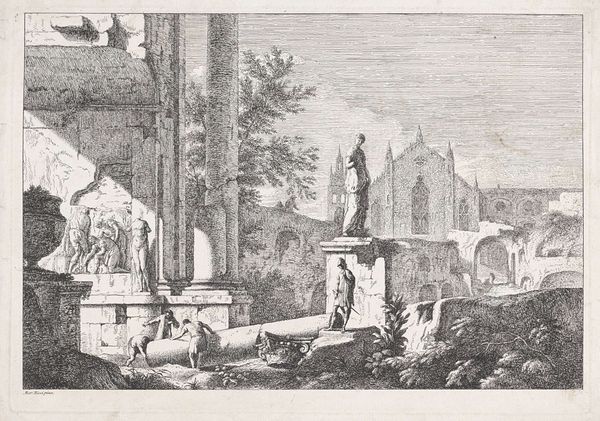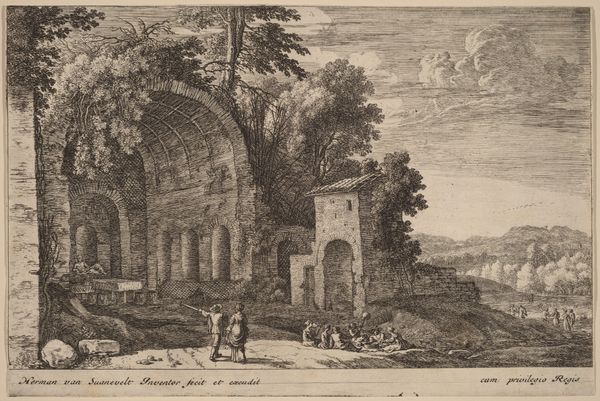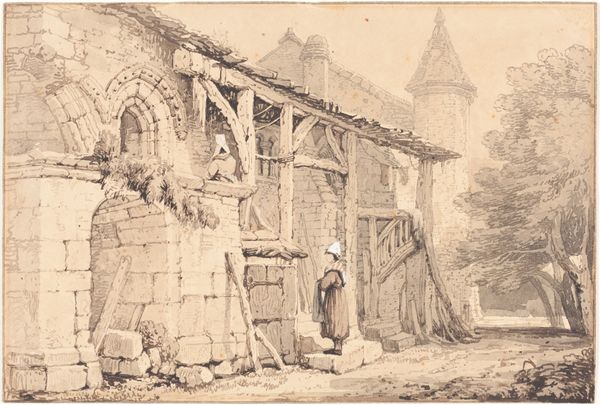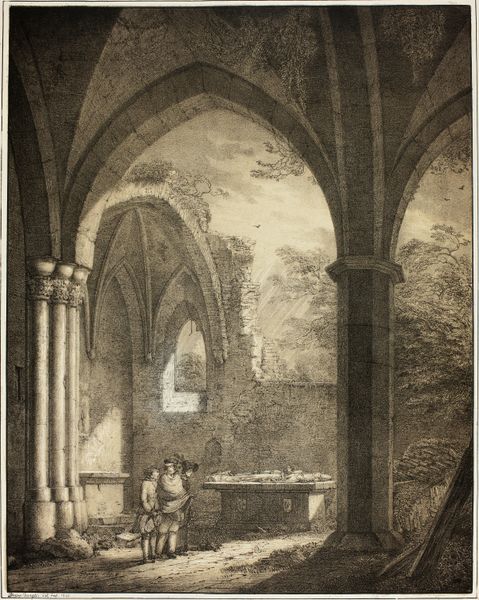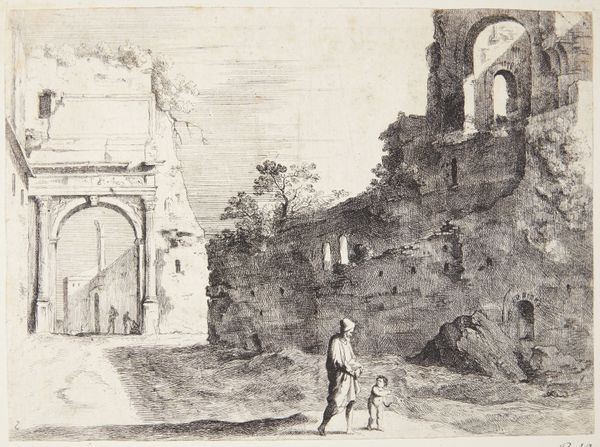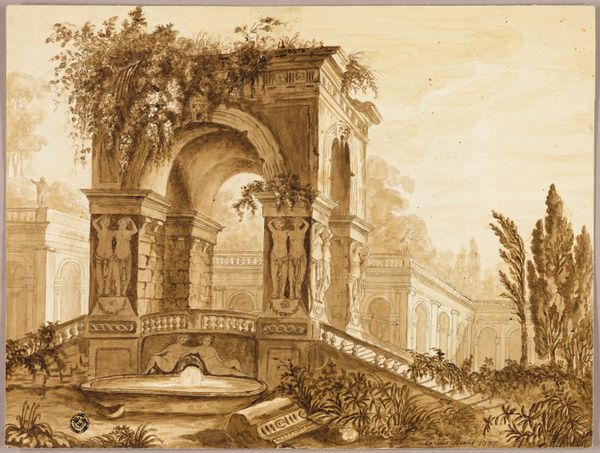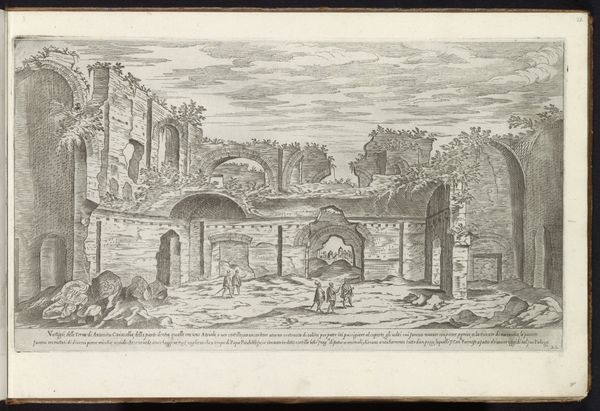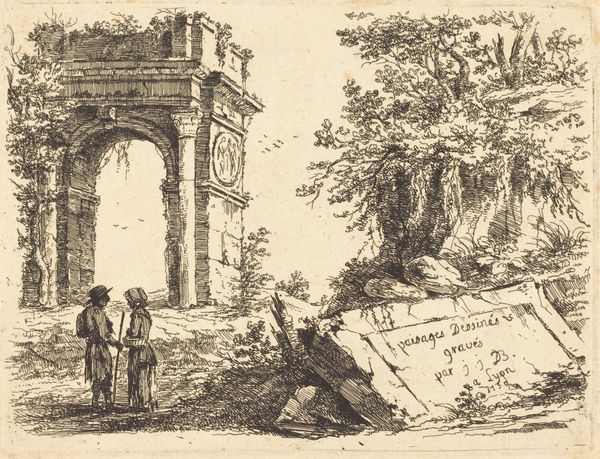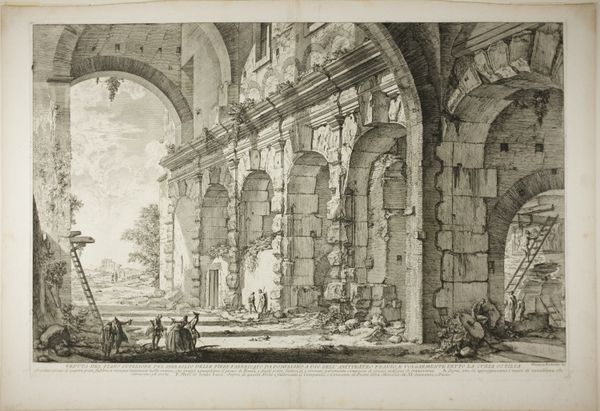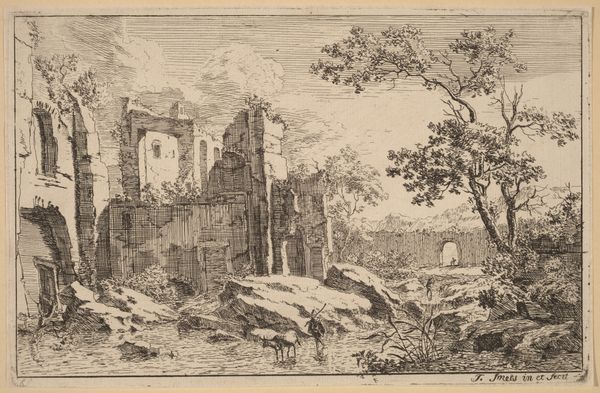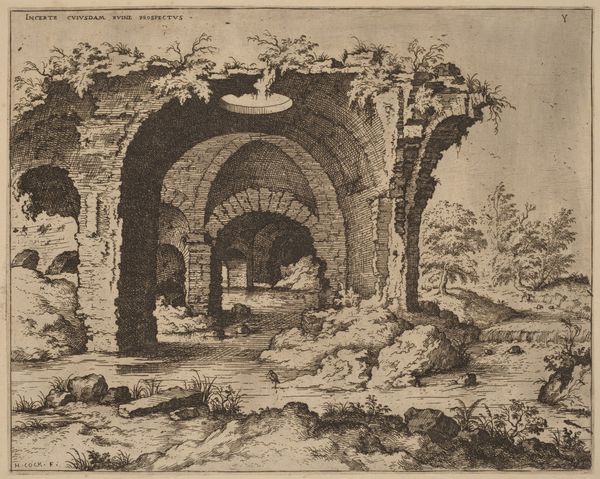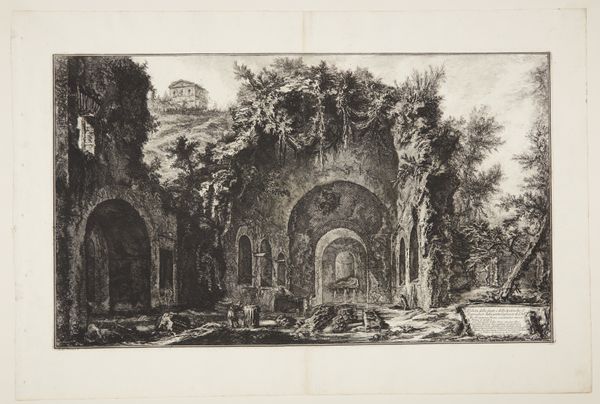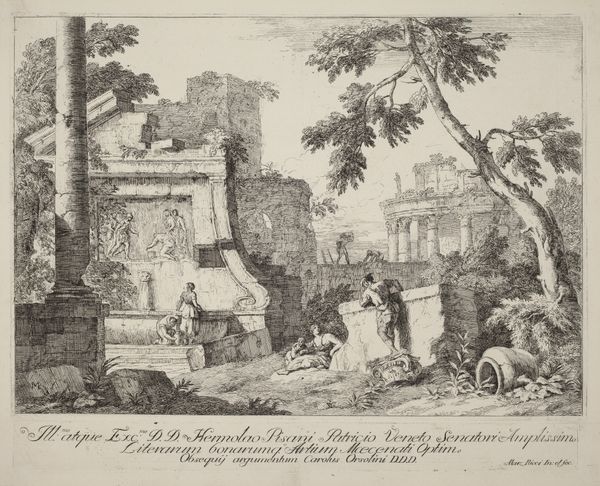
Ruines de l'Eglise de Berthancourt-les-Dames c. 1840
0:00
0:00
drawing, print, paper, ink, charcoal
#
drawing
# print
#
pencil sketch
#
landscape
#
charcoal drawing
#
figuration
#
paper
#
ink
#
romanticism
#
charcoal
#
history-painting
Dimensions: 13 1/4 x 29 1/2 in. (33.66 x 74.93 cm) (plate)13 1/4 x 19 1/2 in. (33.66 x 49.53 cm) (sheet)
Copyright: Public Domain
Curator: We’re looking at "Ruines de l'Eglise de Berthancourt-les-Dames," a drawing made around 1840 by James Duffield Harding. The artwork, now in the collection of the Minneapolis Institute of Art, features ink and charcoal on paper. Editor: My first thought is melancholy. There's a somberness to this image—ruined architecture, a muted palette…It speaks of loss and decay. Curator: Indeed. Harding masterfully uses contrasting values of charcoal to create a sense of depth, notice the articulation of light and shadow on the stonework. And the detailed linework in ink really captures the textures of the ruins and the overgrowth. Editor: And that overgrowth is key, right? Nature reclaiming a space once dominated by human construction, echoing larger themes of colonialism and cultural appropriation so prevalent at this time. The church, symbolic of power, now stands humbled. Curator: That's a compelling reading. From my perspective, I find myself drawn to the pictorial composition, its balance and interplay of forms. Observe how the verticals of the church's facade are softened by the horizontality of the figures in the foreground. Editor: Yes, but those figures, seemingly at leisure amidst the devastation, what do they signify? Perhaps an oblivious elite, insulated from the repercussions of societal shifts and unchecked authority represented by these broken remnants. Curator: It's tempting to draw a political conclusion, but the piece also demonstrates the picturesque aesthetic, where ruin is used to provoke reflection on temporality and human history. It asks the viewer to see beauty in what has fallen, to reflect on passing time. Editor: Beauty perhaps, or at least an aestheticization of destruction, a removal from the stark realities that created these 'picturesque' sites. We risk romanticizing suffering if we avoid these discussions of inequality. Curator: I find value in your perspective. Engaging with socio-political ideas in art interpretation allows us to enrich and nuance our formal understanding. Editor: And examining an artwork’s formal qualities enriches our insight into its political narratives. Curator: It does indeed provide us with further nuance. I shall try to incorporate it into my future engagements. Editor: The past speaks so much more clearly when we use every avenue to listen to it. Thank you for the engaging discourse.
Comments
No comments
Be the first to comment and join the conversation on the ultimate creative platform.
